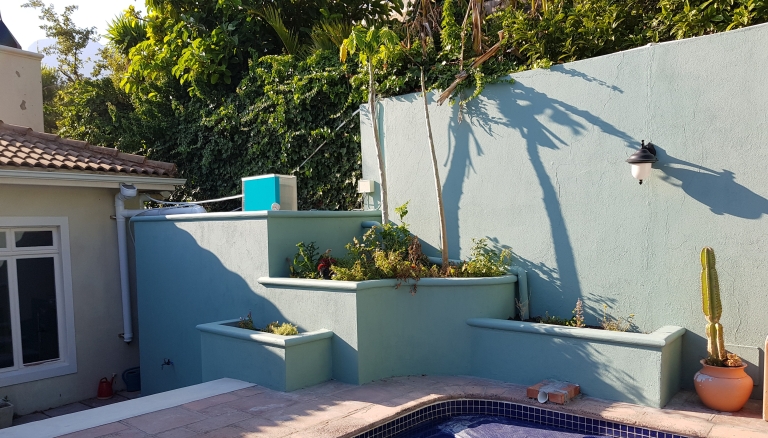At JV Waterproofing we don’t cut any corners, which means you will have a better end result and won’t have to deal with your waterproofing problems recurring over the years.
We credit our success to a good understanding of the materials, as well as knowledge of both structures and waterproofing systems. Every waterproofing problem we come across is unique, which is why every solution has to be unique as well. We’re not selling you a product off the shelf, we will design a waterproofing system unique to your specific situation.

We specialise in cement based waterproofing. This system is based on Hydration. Hydration is the process through which synthetic rock (concrete) is formed over time by mixing cement, sand, gravel and water. The cement based methodology of waterproofing typically involves the application of one or more layers of waterproofing materials, depending on the nature and severity of the waterproofing problem as well as the nature of the structure.
At JV Waterproofing, we have mastered the art of creating a mix which is waterproof. This system has a managed void ratio as well as additives that aid the hydration process in order to form a stronger, better end product. In addition, we have designed the application of this mix to incorporate a degree of flexibility.

Don’t think of flexibility in terms of an elastic band with typical large movements, but rather as the micro-movements that materials experience during everyday conditions. This includes expanding and shrinking of materials during temperature changes as well as the way that the materials accommodate movement from settlement due to any micro movements of the earth or structure. The flexibility I refer to is typically on a micro scale, so small that it can barely be seen with the naked eye.
We attempt to limit cracking of our specialised mixes by judicious choice of materials and management of the void-ratio together with an improvement of the above mentioned hydration process. In so doing, we achieve a completely waterproof surface that has limited flexibility. We are able to waterproof concrete and brick structures, from balconies to underground cellars and reservoirs. The trick is to anticipate movement and cracking and apply the correct methodology for the situation found.
Here is an example of a potable water storage facility, the internal surface of which has been lined with the JV Waterproofing cement based methodology.

Cement based waterproofing, while generally not the cheapest solution, has advantages that will save you money in the long term.
So if you’re experiencing waterproofing problems, don’t settle for anything less than JV Waterproofing. You won’t regret it.

